
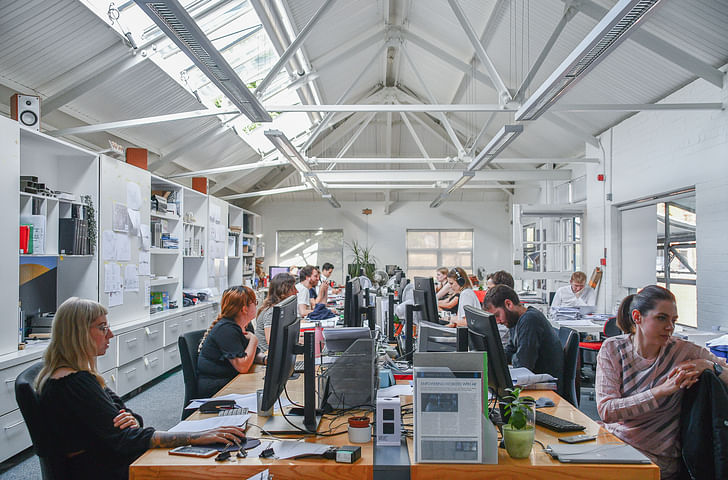
Bennetts Associates are well known for their work within the cultural sector, having restored and renewed, to name a few; The Old Vic, Shaftesbury Theatre and Royal Shakespeare Theatre. Their architectural interventions on the projects mentioned, can at times be upstaged by the consequent buzz of the thriving community, old and new, that flock to these spaces. Because of their work, these perhaps forgotten places have once again become cultural hubs, with improved accessibility, additional seating and spacious foyers that spill out onto the streets creating all-day destinations.
Their skill for creating architecture that supports and stimulates its inhabitants is manifest in their own studio; a curious adoption of neighboring buildings including an 18th-century barn, an old Italian restaurant, and an early 20th-century print-works. The flexible, adaptive space allows for team members to communicate easily and walls filled with current projects encourage transparency and shared ideas.
On this occasion, I met with four members of the teams, with different roles and at different levels within the company - Simon Erridge one of the Directors, Jade Chau an Associate, Anthi Tzakou Head of Business Development and Harriet Powell who joined most recently as an Architect.
When did the practice start?
Simon: The practice started in 1987. My co-director Julian Lipscombe and I, have been at the practice since 1991 back then there were just 6 people.
How many staff are you now?
Jade: We are now 75 in the London office, 6 in Manchester and 15 in Edinburgh.
You must have moved studios several times over the years, tell us more about your current studio space and its evolution?
Simon: This is now the 4th studio we have been in but we have been established here for many years now. It is a set of characterful buildings that we saved from being demolished. Where we are sitting now is an 18th-century barn which was part of Smithfield Market – where the cattle used to rest. This was before there were any houses around here, so it is a real survivor and we chose to keep it as a centrepiece, and it is now where all our meetings are held. The building over there [the main office] was an old early 20th-century printworks. We designed and adapted all the buildings ourselves. We partnered with some of the old architects that used to work here. It is great to bring clients to too; I think it is now a building that talks to the way we work.
Jade: A few years ago, we managed to acquire a former Italian restaurant next door which we have also adapted and now call '326'. We managed to incorporate new ideas into this space, embracing flexible working. For a while, we used the space just for storage and archiving and eventually an internal team oversaw the refurb of it and it is now used as desk space as well as a meeting place and events space where we host lectures, talks, Friday night drinks. There is a variety of ways the space can be used which is great.
Harriet: It is interesting to me to hear how it has evolved because as a new starter it has always been like this for me and it is so integrated into the way we work so it is difficult to imagine it being anything else!
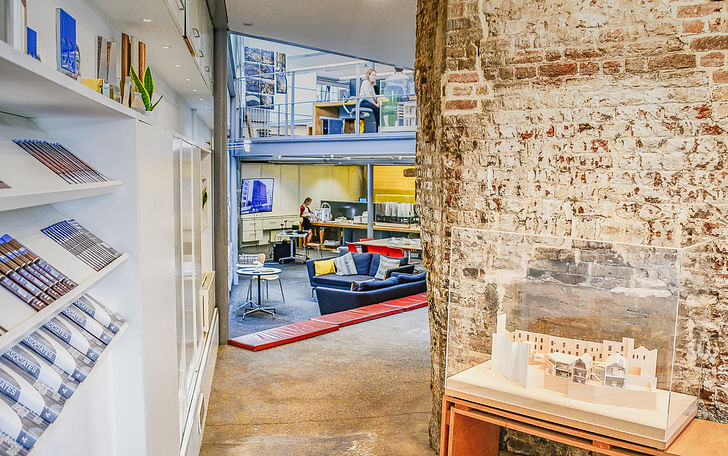
The different typologies of buildings we work on always requires a carefully considered approach to making sure it is built to last, and that it has a timeless quality. This is something important to us and our design approach.
How would each of you describe your company ethos?
Jade: I think our ethos, though it may sound cliché, is a ‘better together’ approach. I think a lot of us here in the practice enjoy the collaborative team spirit of the projects we do. I know that on the project I work on that I champion team inclusion and ensuring every voice is heard. I do personally think when we work together, we bring out the best ideas which brings out the best design.
Simon: I think we have a very open culture and it has always been that way. There is a deep-rooted commitment to sustainability that has been going on since the ’90s and that still carries on to this day. There is also a desire to not specialize, to be a generalist, which may not always be a good sales pitch but I think has great value. We do a lot of work in three really big sectors, workplace; culture and higher education with master planning and city planning overlaid. Those three worlds are very different worlds, with three different types of clients but actually, everybody is looking for the same thing which is social spaces for people to come together and share ideas and experiences.
Jade: The different typologies of buildings we work on always requires a carefully considered approach to making sure it is built to last, and that it has a timeless quality. This is something important to us and our design approach.
Harriet: Everyone is looking for a space to come together to share ideas, it is what we do here and coming in with very little experience what I really enjoy about working here is it enables different personalities to flourish and offers the opportunity to work with different people who approach their jobs in different ways - it has been a massive learning experience for me.
Harriet, as a new starter, was there something in particular that made you want to work for Bennetts?
The thing that sold it for me, in the end, was when I came to interview; the building, watching people work, getting shown around and seeing all the projects on display. I could really picture myself working here and enjoying coming to work which I think is so important now and people are definitely looking for much more of a balance which you get here.
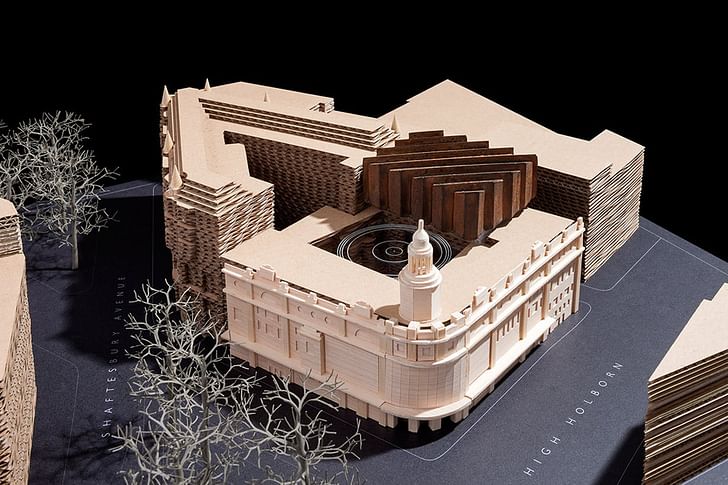
You have worked on several prolific theatres including The Old Vic and Shaftesbury Theatre, all of which play important roles within their communities, how do you approach these projects and ensure you honour their legacy while ensuring a sustainable future?
Simon: We are not people who are timid when approaching a listed building. I think some of the most successful adaptations, take quite a bold approach, they really respect and understand the existing building and take time to get into the mind of the people who created it but then add another unique layer.
Jade: Yes, I think with all the existing buildings we work on you must respect, understand and appreciate the existing fabric but, it is important to give it a new identity. In many ways it is that contrast that adds celebration to the project.
Simon: I think we really enjoy the challenge of having to work with existing buildings, probably half of our projects encompass existing buildings and the challenge of having to transform something is really interesting. Sometimes it leads to very surprising innovations that you wouldn't necessarily come across if you were working on a new build.
Harriet: Woolwich Works, a current project, for example, has such a rich an complex history. It was a place where arms and ammunition were manufactured, which isn't necessarily a positive history. I think you have to acknowledge the past with a building like that. It is so central to what Britain achieved as an empire but also to the history of local people in that area, where many people came specifically to work in the factories. You have to strike a balance - you don't just want to eradicate something that was a substantial part of both the area and the countries' past, but you have to adapt and reconsider it for the future.
Simon: What is particularly nice with Woolwich are that these buildings have been closed off from the public for a long time, they have been kept secret and so it will be a joy to open them to the public and see them used again. The walls are really solid, masonry walls, but then the roofs are really light so you can create these wonderful top-lit spaces. If there ever was an explosion they wanted the roof to blow off and for the walls not to fall down. This unique feature makes then especially good for performances!
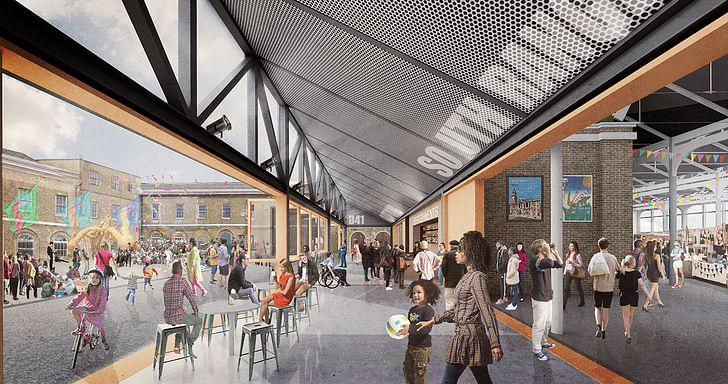
What is particularly nice with Woolwich are that these buildings have been closed off from the public for a long time, they have been kept secret and so it will be a joy to open them to the public and see them used again.
Can you tell us more about some of the projects you are working on currently?
Jade: I am working on the new offices for the Royal College of Obstetricians and Gynaecologists’ (RCOG) who focus on women's health. RCOG were based at a leasehold site by Regent’s Park for the past 60 years but wanted to find somewhere with more longevity and a freehold. They managed to secure a site right by Borough Market, close to The Shard, and Guy’s Hospital, which is great for the organisation as they are now much closer to the decision-makers of Westminster. Bennetts has been working with them now for two and a half years helping to refine their brief, and offer them flexible working environments. The new site located on Union Street consists of two existing buildings previously owned by PWC - a timber-framed hop warehouse and an eighties concrete frame building. The two buildings hug a central courtyard so what we are doing is covering the courtyard to create an atrium space that will become the arrival point into the College. It has a mixture of offices and conference rooms all with a visual connectivity to this covered atrium space. Oddly enough the floor levels of the two buildings do not align, so we have introduced a new feature helical stair that addresses this situation. We had some fun trying to make the staircase work - it has just been installed on site and is very sculptural. Working with local steel fabricators in the UK has been excellent, they are talented craftsmen.
Simon: We are also working on The Ugly Brown Building which uses backland site in Camden, right near Kings Cross. The site has benefitted from the success of Kings Cross and we are excited by the opportunity to open up a site that has been closed for years. Ted Baker is in the middle, with an empty office next to them and we are working on a five-building masterplan which is mixed-used; residential, a hotel and offices. We got consent last year and we are now working on getting the planning agreement sorted out and starting to build in September (past).
Jade: And then our theatre work continues as well, with Hertford Theatre, Shaftesbury Theatre, The Old Vic and Woolwich Works.
Harriet: What is interesting about our approach to Shaftesbury Theatre is that, counter-intuitively, there are elements of the buildings past that you might not want to respect. The theatre has a complex network of circulation which was used to separate different classes, so they never had to see each other. Despite the negative intention, it has created some interesting opportunities architecturally. Where we are taking out the existing fabric and opening it up for the first time you will see these really interesting helical stairs that are interwound with each other. We have had to use 3D modelling and VR to get our heads around how that works, and it has been really useful to have the tool of the 3D printer. We've used these as design tools but also to help us explain the concept when we were talking to contractors and discussing buildability. They really enjoyed it.
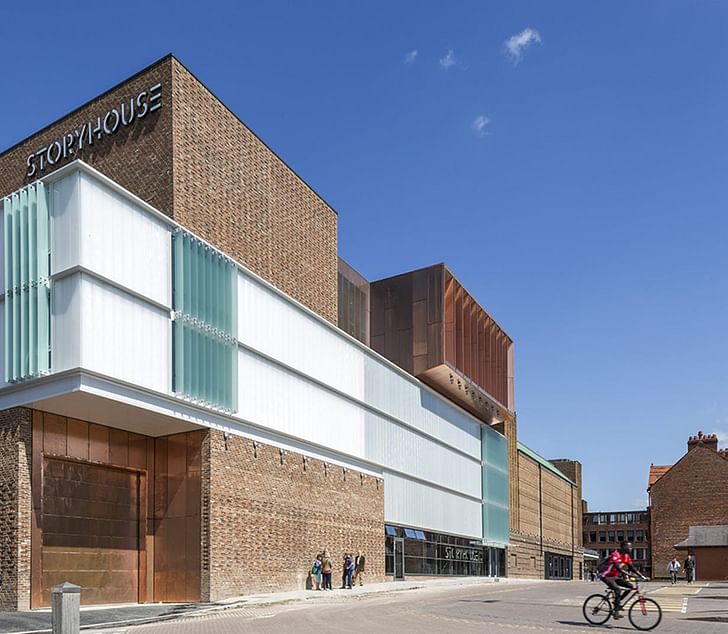
Simon: That kind of work, some of those theatre projects involve incredibly nitty-gritty stuff. You are working inside really complicated buildings that were designed at the time to completely max out the auditorium and squeeze in as many people as possible. The designers were geniuses though who did it and were not recognized at the time for these incredible buildings that were built very quickly. Socially though, they were designed for another age and most venues now are looking to create a space that is not just for the evening that is an all-day venue and the question is how you make a building that sits on Shaftesbury avenue that people want to hang out in during the day and add to the life of the city during the day as well as the evening and this is a trend we have seen with all our theatre clients. We did a project in Chester called Storyhouse which opened in 2016 and has a city library as the front of house of their culture building so now it has become a cultural hub - it has a cinema, a theatre, and a 30,000 book city library and a cafe. It has had one million visitors in its first year and has really assisted with Chester's identity and feels like it has grown out of Chester rather than being imposed on Chester.
Simon: Another project is Jaguar Land Rover’s Advanced Product Creation Centre; it is the first headquarters the two teams of Jaguar and Land Rover have shared, and it is where the new Jaguar design studio is. Talking about design processes it was so interesting, we all got to go up there for a day and look at the building and to see how Jaguar designs cars and how their technology which in essence does the same things we do, visualizing on big screens what they are trying to create making full-sized mock-ups.
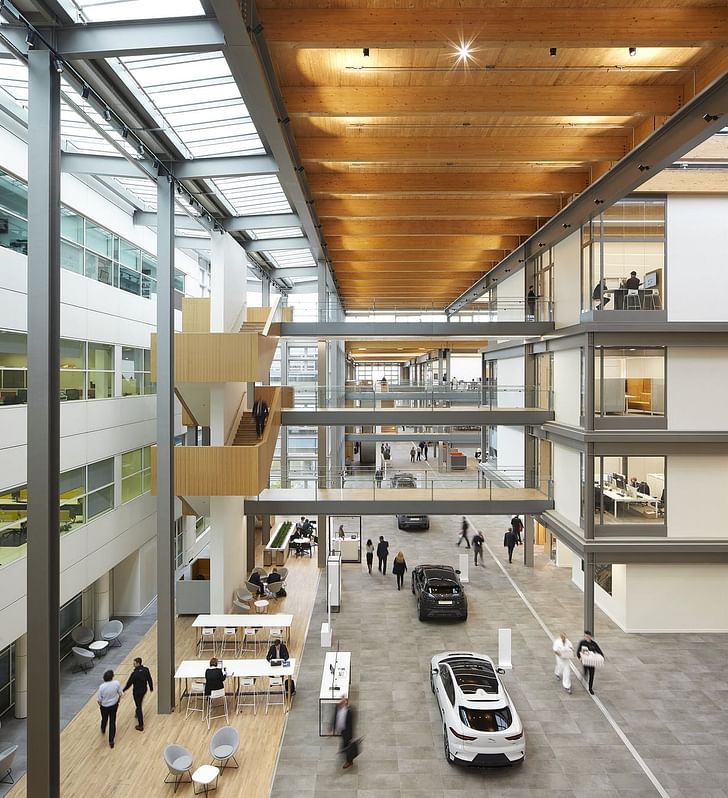
You utilize a lot of digital techniques, how has this informed or changed your design process? Is it offering new opportunities?
Harriet: I think there are two prongs to it, one is how we can use it to communicate our ideas to clients and contractors but then also how it can be used as a design tool. Utilizing VR you can turn it around quite quickly - amazingly, within a couple of hours, you are standing and looking into the room. In that instance, you can see what does work what does not with very little expense.
Simon: It is just fantastic for clients. One of the difficulties is the software is still quite difficult to use but increasingly we are just working in 3D digital throughout. The physical models we do are now prototyped from the digital model, not the other way around. Physical models still have their place but in this way, it is more efficient, easier to understand and easier to share ideas. It is extremely helpful working with existing buildings because we can map out the existing layout much more accurately and easily create a digital twin.
Anthi: BIM also helps our consultants to do their work better so for example on Jaguar Land Rover the contractors would use augmented reality with information from our 3D model just to make sure everything fits together on site - it massively reduces errors and waste during construction, and it makes the relationship with our client much more effective.
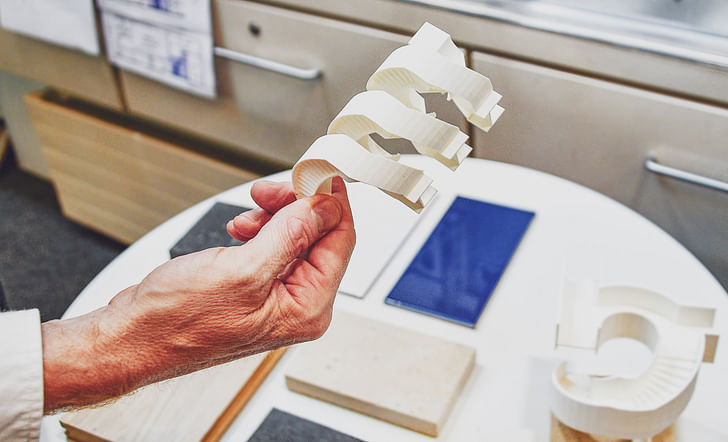
Considering all the different spaces in your studio, do you have a favourite part?
Harriet: Mmm it is really difficult. I think you notice when you walk around, each area has such a distinct character so it depends on what you are doing, what time of day it is. It is nice to be able to move around and have a different variety of spaces and working environments.
Jade : I have to say I really like 326 downstairs. I think it is great, I am not in there often but when I am it is great - it is the way the light changes at different times of the day, it is a great space - seeing it used flexibly is very rewarding.
Anthi: I would probably say the same as Harriet, you feel at home wherever you are in the studio because all the spaces are so well designed and curated with the world of every project, so it is a beautiful space wherever you are. But I think my favourite is probably the staircase because it allows you a short break between things, helps you regroup and because it’s the only vertical circulation space you always bump into someone and have the chance to catch up.
Simon : I like the main atrium space, we changed it around a few years ago and moved the model making area towards the back of it but I quite like the big table in the centre and coming down and working there. When you are sitting there you can see the comings and goings of everyone and we often pin up projects on the wall and if we are doing a bid or a competition then it is nice to put it up there and see how it is going.
I would probably say the same as Harriet, you feel at home wherever you are in the studio because all the spaces are so well designed and curated with the world of every project, so it is a beautiful space wherever you are.

Do you have a favourite nearby coffee shop/lunch spot?
Jade: A good flat white can be found at Saint Espresso on Pentonville Road and Al Turath Falafel is a little stall on Chapel Market that does the best falafel in London - it is a big claim but I stand by it!
Harriet: Exmouth Market - as there is so much variety and we usually go down as a big group together at lunchtime and everyone can get what they want, and we can meet in the local park.
Simon: I like the Stage Door Cafe which is in Sadler Wells which is also used by the artists and creatives, so it has a very nice feel to it and they do a very nice cooked lunch.
Jade: We are spoilt for choice here!
Anthi: My favourite is the Angel Kitchen at the Angel Building because a lot of people don’t know it is a public space and you can go to their cafe and restaurant. The temperature is perfect whatever the time of year and it is like this beautiful lit atrium with this amazing sculpture, which is also a bench, so it feels like you walk inside a gallery to take your lunch.
Do you socialize together as a team?
Simon: Yes, the pub on Friday evening, BBQ’s in the courtyard when we can.
Jade: We frequent the Dame Alice Owen pub which is just around the corner and has changed hands a few times. We were very happy when it reopened.
Simon: I remember when it was called The Red Lion and it had a sticky carpet and it was a proper unreconstructed 70’s pub that was when I first started here!
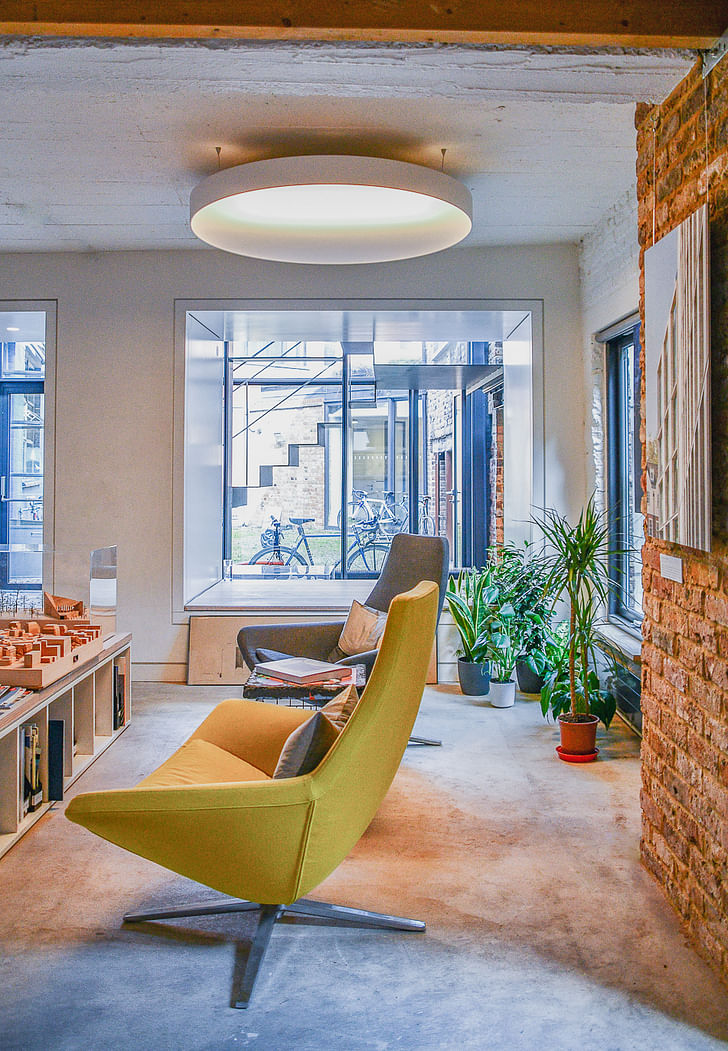
Is there an Architect or Architectural Style that you look up to?
Harriet: My favourite architect is Peter Barber. Not to do so much with the style of what he designs but I think he is doing a really important thing showing that you can operate a practice and an office successfully and not compromise on the social values you have. His projects are doing a really important job within the housing sector, they are accessible to everyone and demonstrate that good design doesn’t have to be exclusive.
Jade: Maybe I am a bit biased because I am a Mackintosh School of Architecture graduate but Charles Rennie Mackintosh. I think every single time you visit one of his buildings, you can visit on multiple occasions and you will have a new sensation or experience. A lot of the work that we architects consider incorporates environmental design, understanding of local context and local materials and Mackintosh was doing that hundreds of years ago! The fact that his work is still timely now, for me, means hopefully the work we are doing will receive similar appreciation down the line. And he was a generalist too like us!
What is your Favourite building in London?
Simon: One of my favourite buildings is the Royal College of Physicians in Regents Park which I think you look at it now and you can’t believe it was designed in the 1950s. For a royal college, it celebrates the nature of the college-going through their formal process of creating doctors and has fully working office space and it performs those functions well and sits within a beautiful space.
Anthi: I am going to be very typical and say the Barbican. After so many years, every time you go it still feels like a different type of building because it is reactivated by the public display of art or a performance that is happening on site. It is completely loved by everyone who goes there and you can feel it when you are there.
Jade: I have two! One, National Theatre - I think it is stunning. At the same time, it is a community building open to everyone. It is fascinating to watch all the people who come there time and time again to read a book or to rest. Secondly, the Royal Albert Hall, I’ve been to different events there whether it is orchestras, movies, concerts and it works every single time - I think there is a lot to learn from it with the work we do with cultural buildings - I think it is fantastic.
Harriet: What I love about London is its diversity but if I had to choose one it would probably be the Natural History Museum. When I first came to London as a child, as a visitor, it just captured my imagination. I have loved coming back bringing my younger brother and sister and now with my daughter, it is wonderful, it has stood the test of time. It is brilliant when you go there and you see people experiencing it for the first time and their faces light up.

Of all the buildings you have designed do you have a favourite?
Simon: It is probably going to be Storyhouse in Chester. It was a really interesting repurposing of a redundant cinema and the vision from the council buying that and imagining it as a cultural hub was great. Seeing it have the incredible success of 1 million people in its first year with 150 community groups using the building, 200,000 people buying tickets for shows makes it a great success. To see how that has transformed the lives of people in Chester that say it has changed the feel of the city and given it a new identity, that is something I am very proud of.
Jade: I would probably say RCOG’s office, I have really enjoyed it. I have loved the process, I’ve enjoyed the client, the team we have been working with and the fact that we got to work with an existing building and take our client on a journey with these new architectural interventions and then actually figuring out how to build it. Working with local craftsmen who are magicians at what they do. I am excited about that space and our addition to that area of London.
Harriet: I haven’t worked on anything that is finished, so I can’t say yet! But I am excited to see the ones I am working on complete. They have both been so interesting.
Ellen Hancock studied Fine Art and History of Art at The University of Leeds and Sculpture at Mimar Sinan Fine Arts University in Istanbul.Now based in London she has a keen interest in travel, literature, interactive art and social architecture.
No Comments
Block this user
Are you sure you want to block this user and hide all related comments throughout the site?
Archinect
This is your first comment on Archinect. Your comment will be visible once approved.